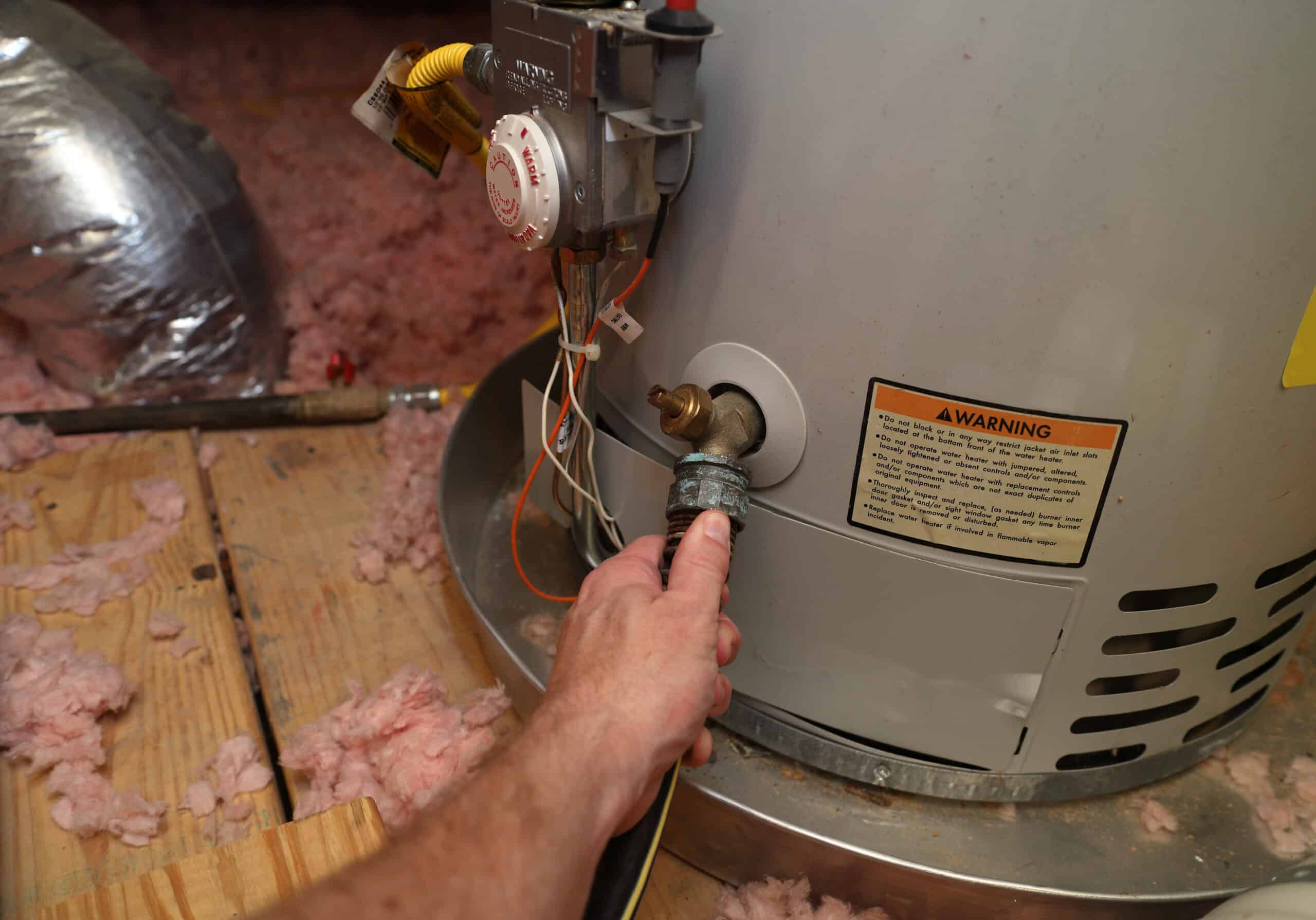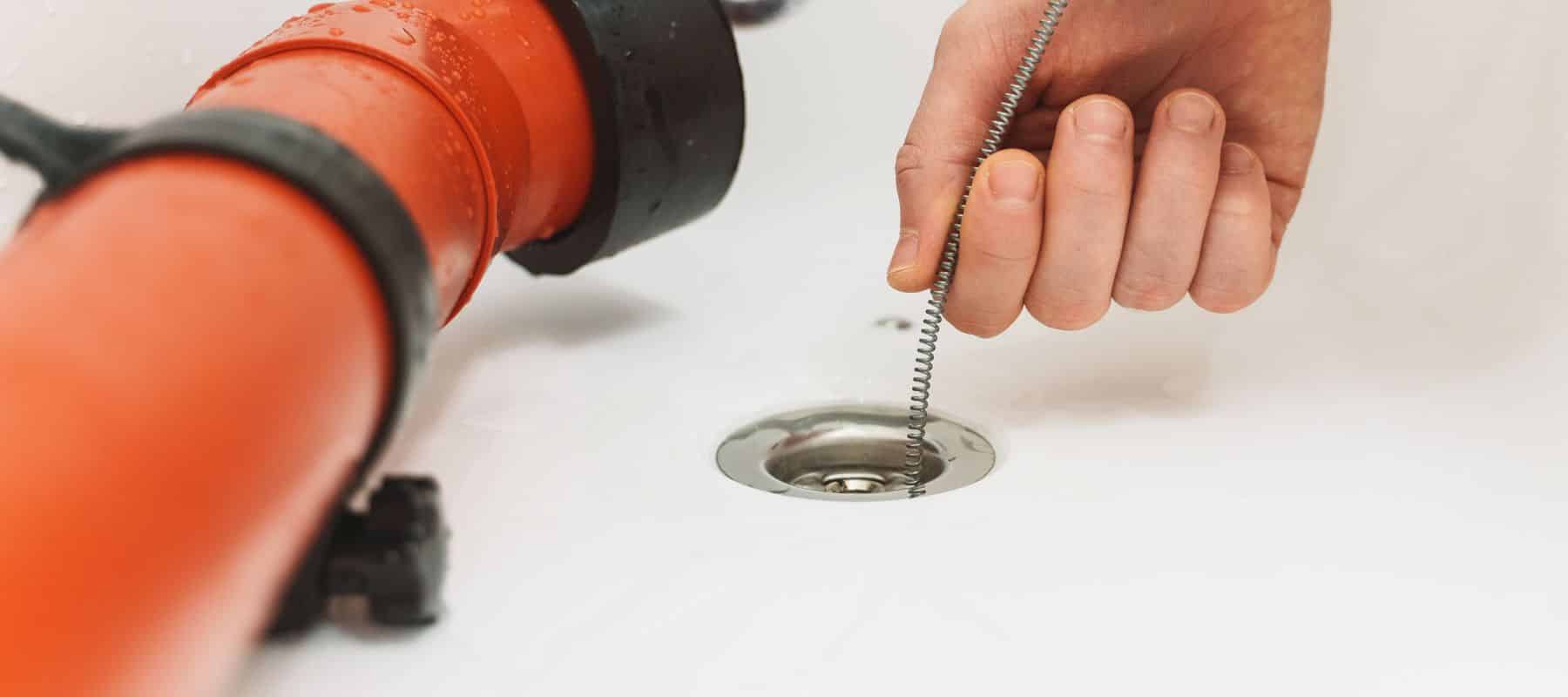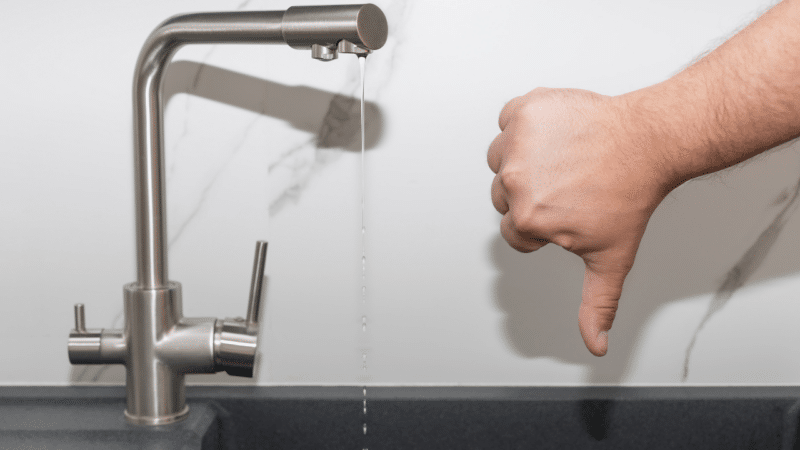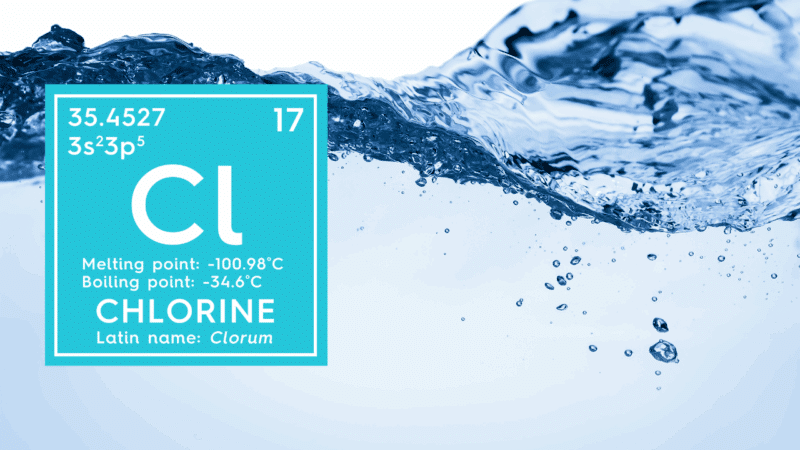In this article…
- Where Does Dallas’ Water Supply Come From?
- How Does Dallas Treat the City Water Supply?
- What’s In Dallas’ Water Supply?
- Treating Your Water For Clean, Healthy Drinking Water
Have you ever taken a drink from your tap and wondered what that taste was? Are you concerned about the quality of Dallas’ water supply?
Water is an essential component of our day-to-day lives. We drink it, bathe in it, cook with it, and supply it to the friends, family, and pets in our homes.
Whether you’ve been considering investing in a water filtration system or simply want to know what’s in your water, understanding the quality of your local water supply is important.
You want to know if your home’s city water supply contains potentially harmful contaminants and if you need a filtration system to improve your water.
At Jim’s Plumbing Now, our team of licensed, professional plumbers is here as your water quality experts, providing you with robust water quality testing and high-quality solutions for whole-home filtration systems.
We offer many options for both whole-home and point-of-use water filtration systems to fit any home to provide you with better-tasting, healthier water.
Before investing in a water filtration system for you, it’s helpful to understand what’s in your water to better know how a filtration system can improve your home’s water and your overall health.
This article will outline where the city of Dallas’ water supply comes from, how the city treats the water, top contaminant levels, how they affect you, and more.
Then, you’ll have an overview of what’s in your water and understand how you can improve your home’s water.
Where Does Dallas’ Water Supply Come From?
Dallas’ water supply serves over 1.3 million people, making it one of the largest cities in the country to rely on city water.
The city sources its water from seven local reservoirs, including Lake Ray Hubbard, Lake Lewisville, Lake Grapevine, Lake Ray Roberts, Lake Tawakoni, and Lake Fork.
(In the future, Lake Palestine is also expected to be tapped to meet growing water demands.)
All of the city’s water comes from surface sources such as these reservoirs and rivers. Although Dallas sits on top of an aquifer, no groundwater is used for the city’s water supply.
Once water is used, it becomes wastewater, or sewage, and is pumped through the system to one of two wastewater treatment plants. There, it is cleaned and returned to the Trinity River, where it flows downstream and is used by other cities.
The wastewater treatment facilities consistently meet stringent state and EPA standards and have earned awards for their operations and effectiveness.
The treated wastewater released into the river is reported by Dallas Water Utilities (DWU) to be cleaner than the water taken from the river upstream for drinking purposes.
How Does Dallas Treat the City Water Supply?
Dallas Water Utilities uses a combination of chemical treatments, settling, filtering, and disinfection to ensure the water is safe to drink. The chemicals used include:
- Chlorine and ammonia (which form chloramine) or ozone for disinfection
- Lime and iron sulfate to remove suspended solids and control corrosion
- Activated carbon to improve taste and smell
- Fluoride to help prevent tooth decay.
Chloramine is used in place of chlorine because it’s reportedly better for public health. Studies have shown that using chlorine alone can create byproducts called trihalomethanes, which might be harmful if consumed in large amounts over time.
However, trihalomethane levels in treated water are generally within the safe zone because it is common in most treated water supplies that use chloramine to treat water.
Dallas water is non-corrosive, meaning it’s less likely to pull lead from pipes compared to more corrosive water. This, along with the city’s treatment processes, ensures high-quality, safe drinking water.
What’s In Dallas’ Water Supply?
Understanding where your water comes from and how it is treated before entering your home is the first step to knowing how safe your water supply is.
You also want to know what contaminants and chemicals are present in your water, how much, and how they affect you.
Here’s a breakdown of some of the common contaminants found in Dallas’ water supply and what it means for you.
Data is taken from the Dallas Water Utilities 2023 water report and the Environmental Working Group (EWG) water quality reports for the city of Dallas.
1. PFAS Chemicals (Forever Chemicals)
PFAS chemicals are some of the most harmful and concerning contaminants that are found in city water supplies. They are known as “forever chemicals” because even minimal exposure can lead to long-term health problems, such as thyroid disruption, liver damage, and cancer.
These contaminants were first identified and created through the manufacturing of consumer products in the 1940s. Now, PFAS chemicals are commonly found in our soil, water, food, electronics, and more.
PFAS can take over 1,000 years to completely break down, making them a large threat to the environment and our health.
In April of 2024, the Environmental Protection Agency announced nationwide standards for common PFAS chemicals, which were upheld in 2025.
There are three main PFAS chemicals found in the Dallas metroplex: PFOS, PFOA, and PFHxS.
- PFOS
- Maximum Contaminant Level (MCL): 4.0 ppt (parts per trillion)
- Found in Dallas: 0.8 ppt (average) – 5.1 ppt (highest recorded)
- PFOA:
- Maximum Contaminant Level (MCL): 4.0 ppt
- Found in Dallas: 1.6 ppt (average) – 6.3 ppt (highest recorded)
- PFHxS:
- Maximum Contaminant Level (MCL): 10 ppt
- Found in Dallas: 0.9 ppt (average) – 3.8 ppt (highest recorded)
As you can see, there is a broad range in PFAS chemicals throughout Dallas, with the averages within national standards, but the highest recorded levels exceeding national standards.
If you want to learn more about PFAS and how your area is affected, check out this interactive map from the EWG that shows what areas across the U.S. have drinking water below or above the proposed PFAS limit.
2. Disinfecting Chemicals
In nearly every public water supply, disinfecting chemicals are used to cleanse the water and eliminate harmful bacteria. However, it’s possible that too much of these chemicals are used and, as a result, actually harm the quality of your water.
Common disinfecting chemicals found in Dallas’ water supply are bromate, chloroform, bromochloroacetic acid, bromodichloromethane, bromoform, dibromoacetic acid, dibromochloromethane, dichloroacetic acid, the haloacetic acids HAA5 and HAA9, total trihalomethanes, and trichloroacetic acid.
It’s important to note that most of these disinfecting chemicals do not have a regulated standard that must be maintained, but the ECG provides recommended maximum levels to help localities fight for high-quality water.
Some of the highest recorded levels of these chemicals are:
- Chloroform
- ECG Recommended Maximum Contaminant Level: 0.4 ppb (parts per billion)
- Found in Dallas: 10.22 ppb (average) – 23.60 ppb (highest recorded)
- Bromoform
- ECG Recommended Maximum Contaminant Level: 0.5 ppb
- Found in Dallas: 0.8 ppb (average) – 1.29 ppb (highest recorded)
- Bromodichloromethane
- ECG Recommended Maximum Contaminant Level: 0.06 ppb
- Found in Dallas: 8.0 ppb (average) – 13.5 ppb (highest recorded)
- Dibromochloromethane
- ECG Recommended Maximum Contaminant Level: 0.1 ppb
- Found in Dallas: 4.90 ppb (average) – 5.02 ppb (highest recorded)
- Chlorine Residual
- Found in Dallas: 2.97 ppm (average) – 3.10 ppm (highest recorded)
The biggest health risks from these disinfecting chemicals are cancer, harm to reproductive health, and harm to fetal growth and development.
3. Chromium (Hexavalent or Chromium-6)
Hexavalent chromium is a toxic form of chromium that typically contaminates soil and water from industrial waste.
This type of contaminant is considered a carcinogen, meaning it is linked to causing cancer in humans. Other health risks that chromium poses include liver and kidney damage, respiratory issues, damage to reproductive health, and skin rashes with direct contact.
Chromium is regulated and measured by the EPA, and the standard maximum level for chromium in drinking water is 0.1 mg/L, or 100 ppb.
In Dallas, chromium was measured at an average of 1.6 ppb with a maximum level of 2.7 ppb in 2023. While this is within the federal standard for chromium, the ECG recommends no more than 0.02 ppb of chromium in drinking water.
4. Nitrates
Nitrate and nitrite are common chemical compounds found in fertilizers. These chemicals make their way into Dallas’ water supply through agricultural runoff.
Intrusion of these chemicals has been linked to kidney, liver, and ovarian cancer, and also can pose a risk to newborns, causing blue baby syndrome due to a lack of oxygen in red blood cells.
Here’s how Dallas compares to the federally regulated standard of nitrates and nitrites in drinking water:
- Nitrate
- Maximum Contaminant Level (MCL): 10 ppm (parts per million)
- Found in Dallas: 0.834 ppm (average) – 1.09 ppm (highest recorded)
- Nitrite
- Maximum Contaminant Level (MCL): 1 ppm
- Found in Dallas: 0.006 ppm (average) – 0.017 ppm (highest recorded)
Overall, Dallas ranks fairly well in nitrate and nitrite levels; however, as an inorganic compound, health risks are always involved.
Treating Your Water For Clean, Healthy Drinking Water
Now you have an overview of where Dallas’ water comes from, how the city treats the water, and what some of the top contaminants are, meaning you can take the best next steps to treat your home’s water and ensure clean, safe drinking water.
Understanding the quality of the water you drink is crucial for your health and well-being. While the city works diligently to provide clean, treated water to over 1.3 million residents, it’s important to recognize that no water supply is completely free of potential contaminants.
Dallas’ water comes from local reservoirs and undergoes extensive treatment processes designed to remove harmful bacteria and other contaminants. However, substances like PFAS chemicals, disinfecting byproducts, hexavalent chromium, and nitrates still make their way into the water supply.
While the levels of many contaminants in Dallas’ water meet or fall below federal and state standards, there are still concerns about the long-term effects of PFAS, disinfecting byproducts, and chromium.
If you’re concerned about the safety of their drinking water or who wish to improve its taste, investing in a water filtration system may be right for you.
Whether you choose a whole-home filtration system or a point-of-use filter, these systems can help reduce the presence of harmful substances, ensuring that your water is cleaner, healthier, and better tasting.
Want to learn more about what’s in your water, how water quality is tested, and how water filtration systems can help?
Check out this article that details different ways to test water quality, including professional and at-home testing, common contaminants that are tested, and what levels are safe.
Ready To Improve Your Home’s Water Quality?
At Jim’s Plumbing Now, we’re committed to providing expert solutions for all your water quality needs, from testing to installing high-quality filtration systems.
We’re here to help you ensure the water in your home is safe, clean, and ready for you and your family to enjoy.










